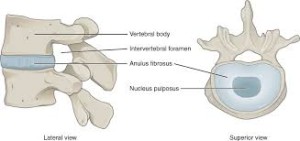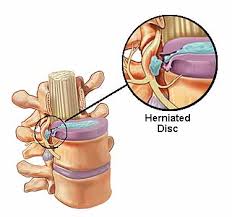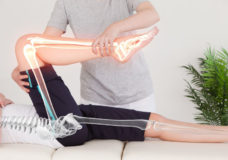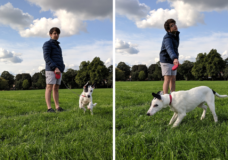A ‘Slipped Disc’ and How Chiropractic Care Can Help!
Before we talk about a condition known most commonly as a ‘slipped Disc’, it is important to know where and what it actually is.
The discs lie between the vertebra in the spinal column, which span from the base of your skull down to the small of your back. The discs are gelatinous in nature and consist of an inner (nucleus pulposus) and outer layer (Annulus Fibrosis). They act as shock absorbers to the spine, enabling the body to carry out normal everyday activities with function and ease.
When a disc is herniated, prolapsed or ‘slipped’ then this basically means that the inner layer has been compromised. When the back is placed under extreme pressure or force, the gel-like layer can protrude outwards and tear. Depending on the severity of the tear and the cause, the gel then leaks out and can press on a nerve at that level of the spine. This dictates the area by which the person will feel the symptoms. The lowest disc being the L5/S1 is the most commonly damaged region and accounts for approximately 95% of disc herniations. The lower the disc, the more pressure is placed upon it, hence why the L5/S1 is the most commonly affected.
A typical example of a patient presenting to the clinic with a slipped disc, would be:
33 year old female office worker that works 40 hours per week sat at a desk with a generally bad posture. Whilst doing a kettle bell class in the evening she bent down to pick up the kettle bell and felt her back go. Pain was a severe 8/10 and now refers from the lower back on the right, down into the gluteal muscles, hamstring and into the toes. Bending forward brings on the pain and daily activities are a struggle.
This is a typical presentation of a herniated disc. There may also be weakness in the lower limb muscles, sensation changes, numbness and sometimes people may complain of changes in their bowel and bladder movements.
The main causes for a disc complaint in the lower back are age, trauma, posture, obesity and smoking, with the most common age group between 20-40. Although extreme or heavy pressure on the spine usually causes a damaged disc, it can also be caused something innocuous, such as bending down to pick a pen up. If the spine has been damaged through constant postural problems or previous trauma then the disc may simply be waiting to tear no matter what the cause.
Chiropractors are well trained diagnostic musculoskeletal specialists. They focus on diagnosis, treatment and management of the most common conditions that we suffer from everyday. With regards to the disc injury, the Chiropractor would take a full history of the presenting complaint, examine the patient thoroughly and explain their findings. Following this, treatment may be provided straight away or additional advice such as ice or exercises may be given. Over the period of a given number of treatments the Chiropractor would use their expertise in spinal manipulation to ease the pain and restriction in the spine , thus reducing the inflammation around the injured region.
Every Chiropractor has a slightly different approach to a patient and may use varied manual techniques when treating a condition, but there is one constant . . . . . . we are here to help, diagnose, treat, manage and advise. Be proactive and treat the spine before you treat the pain!








